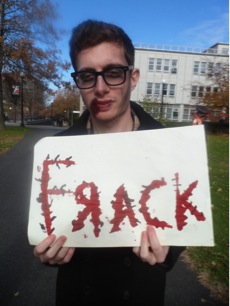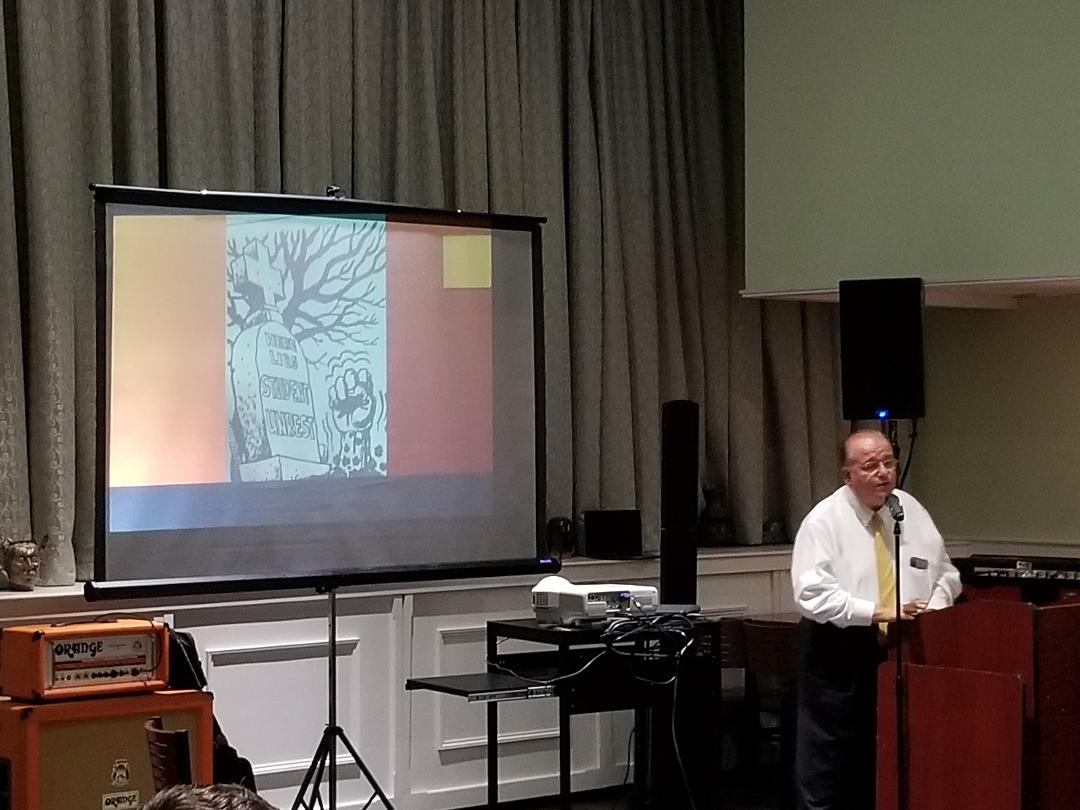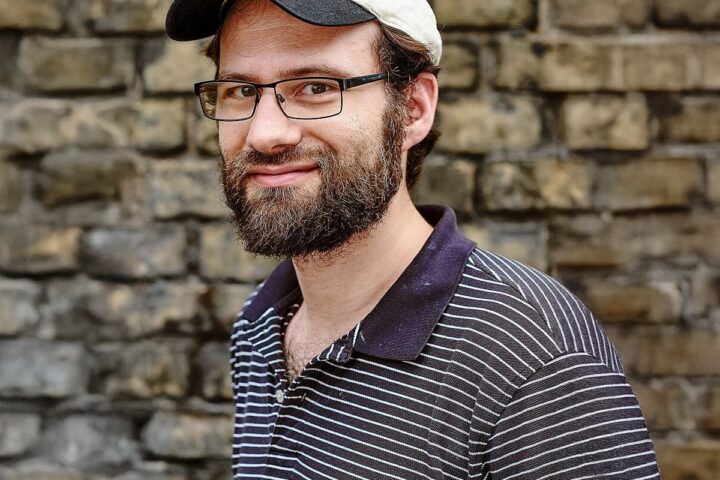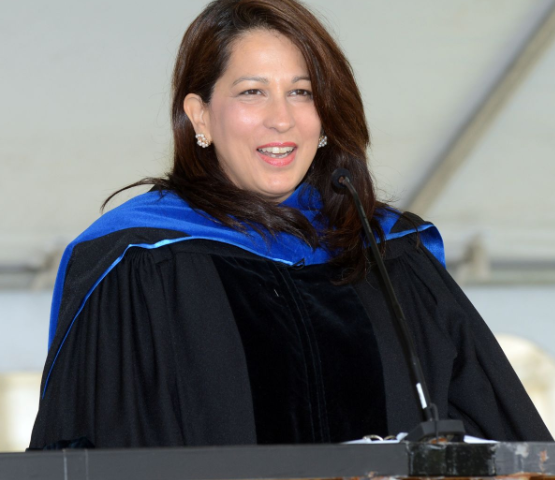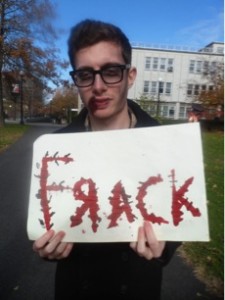
Enrico Purita, NYPIRG Project Coordinator, dresses up as a zombie to raise awareness about hydrofracking on November 14th on The Quad.
Ripped shirts, bloody faces, dark stares and pale skin — no, it is not a zombie apocalypse or a scene from “The Walking Dead” — rather, students dressed as zombies as part of New York Public Interest Research Group’s, Zombie Walk against hydrofracking.
On Nov. 14, student activists and members of NYPIRG gathered around the flag pole on the Quad during Free Hour, eagerly awaiting passersby to spread the word about hydraulic fracturing: the extraction of natural gas from the earth, which can cause harmful chemicals to come into water systems potentially making people sick.
This event was a “visual representation of the dangers of hydrofracking and the havoc it reaps on the community,” said Enrico Purita, NYPIRG Project Manager.
New York City water comes from a watershed located in upstate New York. A watershed is an area of land where surface water from rain, melting snow or ice converges at the exit of a basin and joins another body of water such as a lake, reservoir or ocean. To preserve this extensive system, the NYS Department of Environmental Protection has sought to restrict development within 35,000 feet of the watershed, including drilling for natural gas.
“It is symbolic of people drinking infected water,” said Alex Kavouras,
NYPIRG member, who encouraged students to take action against the issue that Governor Andrew Cuomo supports and plans to continue.
Due to advocacy against hydrofracking by environmental groups against drilling in areas of upstate New York, which is the unfiltered source for water for the entire city, the NYS Department of Environmental Conservation has to analyze new regulations on the drilling process before fracking is allowed.
“No fracking way! Call Cuomo Today: 1-800-566-5020,” read a large sign held by several students. It summed up NYPIRG’s goals for their Zombie Walk: increasing awareness and evoking action from students on campus.
“Use my phone, my minutes, my battery,” Kavouras said, allowing students to call Cuomo’s office on the spot to leave messages on his phone.
“Stop hydrofracking in New York and don’t start it in any other state,” said Areeba Qazi, a freshman who quickly jumped at the opportunity to call Cuomo’s office.
There are over 500,000 active natural gas wells in the United States as of 2009, according to documents released by the New York Times. More than 90 percent of them use this process to stimulate gas flow.
Margaret Wang and Stephanie Shiwram, project leaders for NYPIRG’s environmental campaign, said their main goal is to raise awareness about hydrofracking.
“We need to draw attention to the issue because very few people have heard of hydrofracking,” said Wang.
Ricardo Nieves, an international student from Puerto Rico, confirmed this as he passed by the display of students protesting. “I had no idea,” Nieves said, upon hearing news about hydrofracking.
Jason Carache, a sophomore, was initially surprised to see students dressed as zombies and thought it was a late Halloween event. He admits he has heard about hydrofracking, but didn’t quite know the details of it.
“We should all be conscious of this since we live here,” Carache said.


